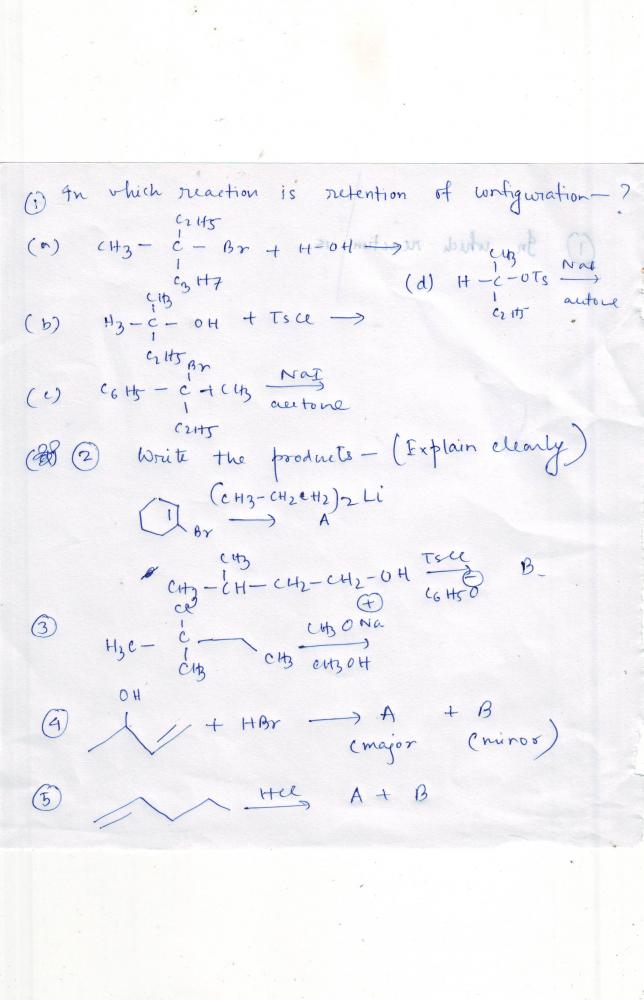@pritish: for 4 wont the ketone be more favourable ?
 Ans given to q1 is {b}
Ans given to q1 is {b}
Explain the function of reactants also...
-
UP 0 DOWN 0 0 9

9 Answers
Kitne shweet questions hain :D
Shouldn't the answer in Q1 be a)? It's the only reaction which doesn't take place via SN2.
In Q2 isn't it a dialkyl lithium cuprate? R2CuLi..
In the second part of Q2, I think it's ether formation. First the alcohol attacks TsCl, forming toluenesulfonate ester or an -OTs. Then the phenoxide ion acts as nucleophile and displaces -OTs which is a damn good leaving group.
So in the main compound -OH becomes -OTs and is blasted away by phenoxide. End product is an ether.
In Q3 an elimination reaction takes place due to steric hindrance in the carbon center. The usual Williamson synthesis fails for tertiary halides and this is one such example.
In Q4, HBr is a nice proton giver(acid). It straightaway gives its proton to the best acid-sensitive group it sees, which is -OH here. -OH leaves as water thus. Now there are two possible products -:
the temperature controlled product, which is thermodynamically stable and takes time to form, and the kinetic controlled product, which is kinetically favoured and forms quickly.
Here the TCP would be formed by resonance of allyl cation, forming a primary bromide with a double bond in between. The KCP would be the product without resonance; straightaway substitution of -OH by -Br (SN1).
In normal cases, the TCP is the major product as we look for thermodynamic stability.
In Q5 it is simple Markownikov addition re!! Surely you can do this one by yourself??
Hmm..how would the ketone be formed? Sorry if I can't think the way you're thinking now...it's been days since I've touched organic chem!
The double bond would have to be right next to -OH (enol) isn't it?
for 3rd there is elimination via E2, bcz base is strong enough to cause it , and i think there will be minor E1 also
1. ans to first is b since no bond to the steriocenter(here the c bonded to O) is broken.
4. Asish i think ketone would be the major product if the double bond were between c2-c3 (isnt it??)
@rahul: migration can take place (can it not ???) ..btw dont remember o-chem that well .. so i might be wrong.
(4)i think carbocation will that one which also contain OH group as it is resonance stabilized.So bromine will attach at that carbon.It will proceed through SN1
@ jangra first acid base reaction will take place in 4th, protonating the OH, and H2O will leave, then C+ will be formed . then we get 2 products
viz CH3 - CH = CH - CH2 -Br (Thermodynamically controlled product , major at high temperature)
and CH3 - CH(Br) - CH = CH2 ( kinetically controlled product , major at low temp )
now i donno if the question wants to further have HBr addition or wat
@asish can you please give the mechanism or atleast a source from where i can read it up. i havent heard of it.